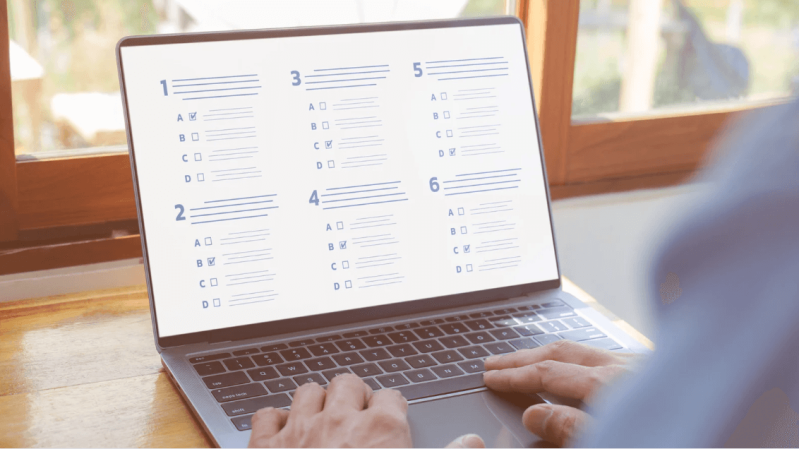The SAT has long been one of the most important standardized tests for students aspiring to attend college. For years, students have prepped with pencil-and-paper exams, practice tests, and flashcards. However, with the transition to a fully digital format, the SAT is evolving. The introduction of SAT adaptive testing is transforming how students take the test—and how they prepare for it.
In this blog, we’ll explore what SAT adaptive testing is, why it’s a game-changer, and how you can adjust your study strategy to excel in this new testing environment.
What Is SAT Adaptive Testing?
SAT adaptive testing refers to the new method being introduced in the digital SAT, where the test adjusts its difficulty based on how well a student is performing. Unlike traditional tests that have the same set of questions for every test-taker, adaptive testing tailors the experience to the individual.
Here’s how it works: When you answer a question correctly, the next one might be more difficult. If you answer incorrectly, the test offers a slightly easier question. This continuous adjustment helps to create a more accurate representation of your abilities. Essentially, the test is constantly recalibrating itself, ensuring that it’s neither too easy nor too hard based on how you’re performing.
One of the most important aspects of SAT adaptive testing is that it uses a multistage adaptive format. This means that the test is broken down into sections, or modules. Your performance in one module will determine the difficulty of the next, making the test increasingly personalized as you progress.
How Does Adaptive Testing Differ from the Traditional SAT?
In the traditional paper-and-pencil SAT, every student answers the same questions in the same order. This format was predictable, but it didn’t account for individual differences in learning styles or abilities. Whether you were an exceptionally strong student or one who struggled in certain areas, the test was rigidly uniform for everyone.
SAT adaptive testing, on the other hand, adapts in real-time to a student’s performance. If you’re performing well, the questions become more challenging, which can help push you to demonstrate a higher level of understanding. If you’re having difficulty, the test adjusts to provide you with questions that are more manageable. This flexibility provides a more tailored testing experience and offers a more accurate measurement of your true skill level.
Another significant difference is the structure of the test itself. In the digital SAT, the test is divided into two major sections—Reading & Writing and Math—each further divided into modules. How well you do in the first module influences the difficulty of the next. This modular approach not only provides more customized questions but also allows for greater flexibility in pacing. Students can move between questions within each module, adding an additional layer of control to their test-taking experience.
Why SAT Adaptive Testing Is a Game-Changer
The introduction of SAT adaptive testing represents a major shift in the way students are assessed. Here are some of the key benefits that come with this new format:
1. A More Accurate Measure of Skills
Adaptive testing provides a more precise measurement of a student’s abilities. Because the test adjusts to your performance in real-time, it’s better able to gauge where you truly excel and where you might need more practice. Instead of being limited to a set number of easy, moderate, and difficult questions, the test evolves to match your ability level.
This allows the SAT to offer a clearer picture of your academic skills. Students who might struggle with test anxiety or who find certain sections particularly difficult will benefit from a test that adjusts to meet them where they are.
2. Shorter, More Efficient Testing
Another advantage of SAT adaptive testing is that it results in a shorter test. Because the test doesn’t need to include as many questions to gauge ability across the board, students can finish the SAT more quickly than before. The adaptive nature allows the exam to home in on your skill level faster, cutting down on unnecessary questions that would otherwise be included to cover a wide range of difficulty levels.
A shorter test also means less test fatigue. For students who find themselves losing focus during long exams, the adaptive SAT format allows them to stay sharper and more engaged for the duration of the test.
3. Faster Results
Gone are the days when you had to wait weeks for your SAT scores. One of the most appealing aspects of the new digital SAT format is that results are available much more quickly—sometimes on the same day. Because the adaptive system is digital and automated, it can process and evaluate answers faster than traditional paper-based methods.
This quicker turnaround means that students can receive feedback on their performance almost immediately, allowing them to adjust their preparation strategy for future exams or move on with their college applications with confidence.
4. Improved Security and Efficiency
The digital nature of SAT adaptive testing also brings with it a higher level of security. Paper-based tests have long been susceptible to potential leaks or cheating, but the move to a digital format significantly reduces these risks. Each student’s test is unique, thanks to the adaptive nature of the exam, which makes it much harder for students to share answers or cheat in traditional ways.
Additionally, the digital format eliminates logistical issues such as test booklet misprints or answer sheet errors, creating a more streamlined and efficient test-taking process overall.
How to Prepare for SAT Adaptive Testing
Preparing for SAT adaptive testing requires a slightly different approach compared to traditional SAT prep. Here are some strategies to help you get ready for this new test format:
1. Take Advantage of Practice Tests
Since the digital SAT will be adaptive, it’s crucial to get comfortable with this format by taking practice tests. Resources like the College Board’s Bluebook app or platforms like LearnQ.ai offer adaptive practice tests that mimic the real exam. These tools will help you familiarize yourself with how the test adjusts to your performance and help you build confidence before test day.
Additionally, taking adaptive practice tests will provide you with insights into your strengths and weaknesses, helping you focus on the areas that need the most attention.
2. Master Time Management
Time management becomes even more critical in an adaptive test environment. The SAT’s modular structure requires that you complete each section within a set time limit, so practicing how to pace yourself is essential. Be mindful of how much time you’re spending on each question, and develop strategies to ensure you don’t get stuck on a particularly difficult problem.
The digital SAT allows flexibility within modules, so practice moving between questions efficiently. This will help you avoid unnecessary stress if you find a particular question challenging.
3. Prioritize Accuracy Over Speed
While it’s important to manage your time, SAT adaptive testing rewards accuracy over speed. The better you perform, the harder the questions become, which means it’s critical to approach each question carefully. Careless mistakes in the early part of the test can lead to easier questions later, which could ultimately result in a lower overall score.
Developing strong self-checking habits can help you avoid unnecessary errors and demonstrate your true ability on the test.
4. Focus on Strengthening Core Skills
Because the adaptive test is tailored to your individual performance, it’s important to build a strong foundation in the core skills tested on the SAT—math, reading, and writing. The stronger your overall academic ability, the better prepared you’ll be to handle both easier and more challenging questions.
Make sure to review key concepts, solve practice problems, and work on areas that may need improvement to ensure you’re ready for the adaptive format.
Final Thoughts
The shift to SAT adaptive testing represents a major leap forward in how students are assessed. By tailoring the test to individual performance levels, it provides a more accurate and personalized testing experience. Whether you’re a high-achieving student aiming for the top score or someone who finds certain areas of the test challenging, this new format allows you to showcase your abilities in a way that wasn’t possible with the traditional SAT.
If you’re preparing for the digital SAT, now is the time to adjust your study strategies. Leverage adaptive practice tests, focus on improving core skills, and make sure to manage your time effectively. Embrace the new era of SAT adaptive testing, and take full advantage of this modern approach to test preparation.



Leave a Reply